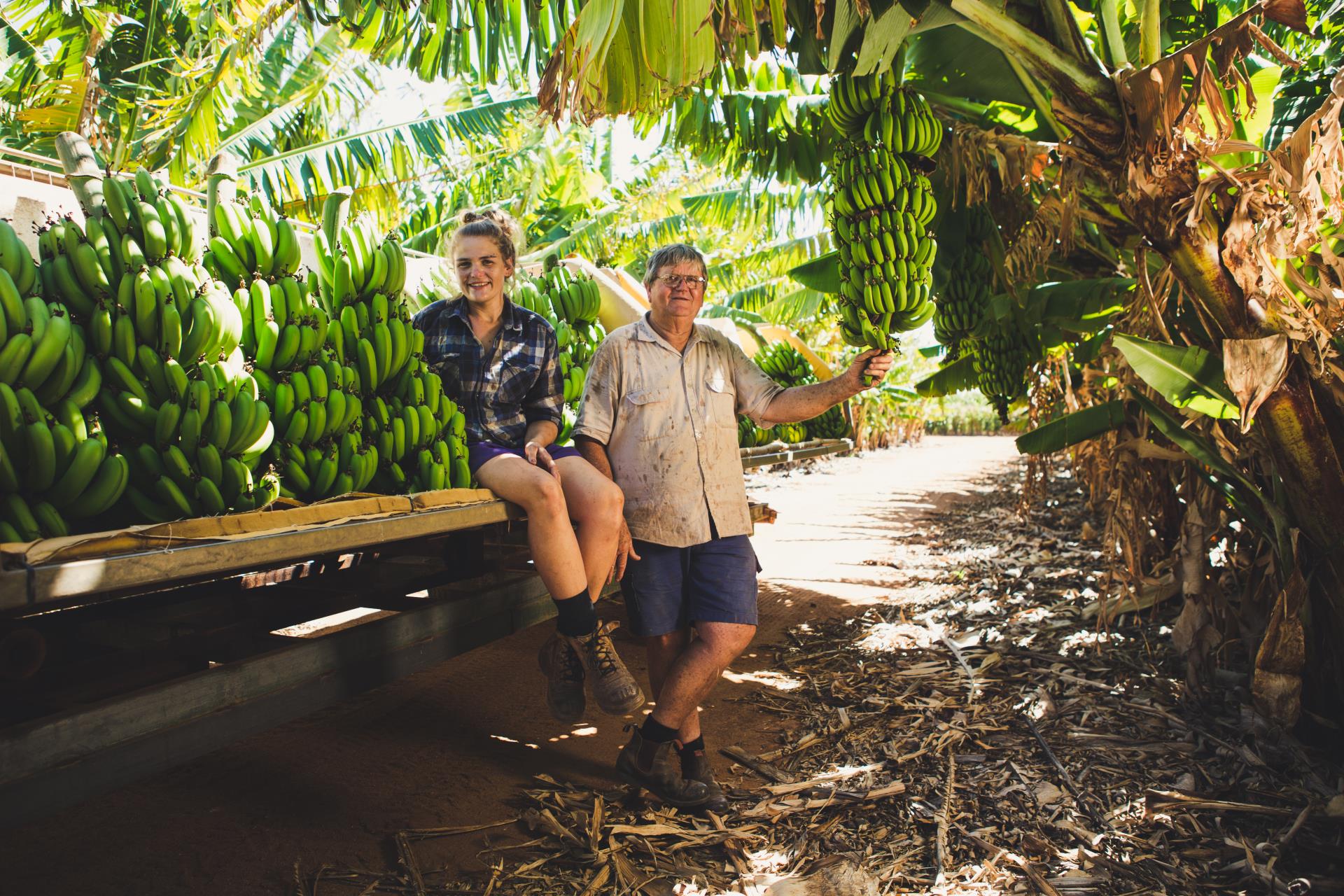Horticulture
Overview
The Gascoyne region has a well established and diverse horticulture industry valued at over $110 million. The industry benefits from good soil types, sub-tropical climate, seasonal advantage, minimal pests and diseases, a secure water supply and industry-driven development.
Produce is predominantly grown in the Carnarvon Horticulture District located on the fertile soils of the Gascoyne River delta. Around 1500 hectares of land is currently under cultivation producing a wide variety of fruit and vegetables. Major crops include bananas, table grapes, tomatoes, capsicums, melons and mangoes. A Seasonal Produce Calendar is available from the Shire of Carnarvon.
Innovations such as shade cropping, fertigation techniques, water use efficiency systems and State Government investment in research, development and irrigation infrastructure and flood mitigation have increased the volume and value of product in the Carnarvon Horticulture District.

Carnarvon banana plantation, image courtesy of Sweeter Banana/Simply Designed
Land
Current production in the Carnarvon Horticulture District is carried out intensively on small landholdings.
There are 180 plantations, with the majority of plantation sizes ranging between 2-40 hectares. The majority of this land is composed of good river system soils. These soils range from a light textured red earthy sand to a medium textured red earthy loam.
300ha of prime horticultural land was released in Mid 2021 in stage two of the the Gascoyne Food Bowl initiative.
Water
The Carnarvon Horticulture District currently benefits from a relatively secure water supply from aquifers beneath or adjacent to the Gascoyne River. The Gascoyne River is an ephemeral river that flows when high rainfall occurs inland at the headwaters. The Gascoyne River flows most years, and flows are the main source of recharge to the underground water stores. There are however extended periods of time when there is ‘no-flow’ but if aquifers are managed carefully and water supplies can be maintained for several years without a river flow.
Horticulturalists with ground water licences allow them to take water to irrigate their properties by using private bores in the river bed. Scheme water is also available to growers which is supplied from areas upstream of Carnarvon. Having two supplies makes water supplies very reliable for growers. On average about 12 GL* of water is abstracted per year.
The region’s horticulturists use technology to produce large quantities of product efficiently. Carnarvon produces about $6 to $7 million of crop per GL compared to the national average of $1 to $2 million per GL.
Climate
The Gascoyne climate is semi-arid and sub-tropical making it ideal for the production of tropical and sub-tropical fruit, as well as winter vegetables. There is an absence of frost in the winter months due to relatively high minimum temperatures. Annual rainfall is low (averaging around 200mm) and rainfall events are sporadic and can occur both in the summer and winter months.
Competitive advantage
The major vegetable growing season occurs in the southern hemisphere autumn, winter and spring months. This allows the Carnarvon Horticulture District to supply the Perth and interstate market with counter-season produce. The Carnarvon Horticulture District also has potential to supply counter-seasonal produce to markets in Asia and Europe from September to May.
A further advantage occurs at the beginning of the domestic summer fruit season when a window of opportunity exists for early ripening varieties to capture the market.
The isolation of the Carnarvon Horticulture District provides a unique opportunity to control pests and diseases and remain free from many serious pests. This assists in the growth of high quality produce with reduced crop damage and losses.
Documents
Feasibility Study for Multi-Food Processing Plant
Gascoyne Horticulture Investment Profile
Carnarvon Pilot Horticultural Processing Facility Concept Design
Collaborative Product Development Research Initiative for Gascoyne Primary Produce By Product
Gascoyne Horticulture Pilot Processing Prefeasibility Report
Value-adding to Carnarvon Horticultural Produce: Ideation, Innovation, Market: Final Report